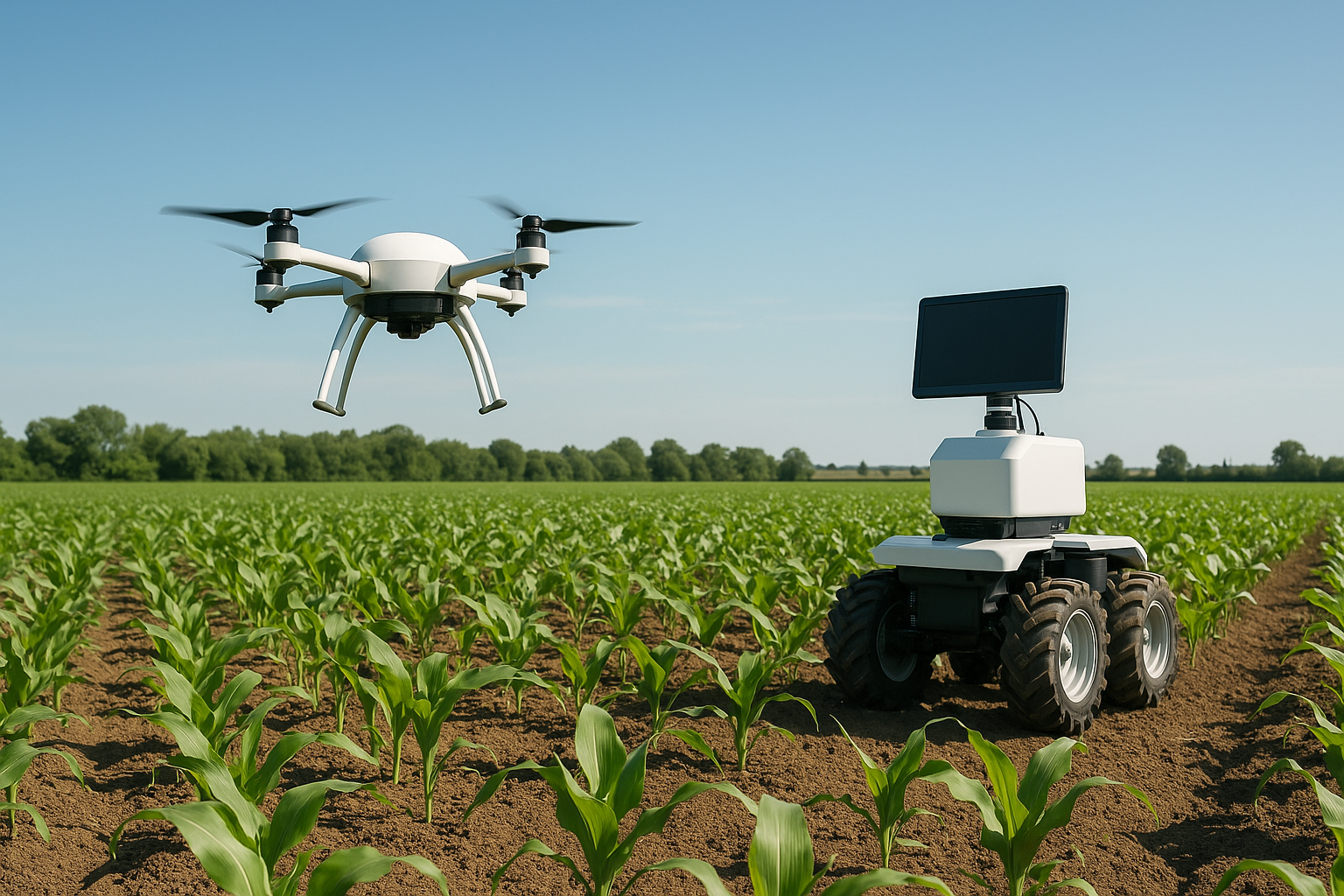AI and IT innovations propel agriculture toward the era of smart farming

A new paper published in Agriculture outlines how computational technologies, artificial intelligence, and information technology are reshaping modern agriculture, offering transformative pathways toward smarter, more sustainable farming.
The editorial, Computational, AI and IT Solutions Helping Agriculture, highlights 17 contributions from a Special Issue, including 16 original research papers and one review, addressing innovations across precision agriculture, robotics, smart machinery operations, diagnostics, and digital platforms.
Why AI and IT are critical for modern agriculture
The Special Issue points out that agriculture is at the forefront of technological disruption, with AI, machine learning, and IoT accelerating the transition from Agriculture 4.0 to Agriculture 5.0. Traditional farming methods, long dependent on manual observation and resource-heavy processes, are now being replaced by computational solutions capable of delivering real-time monitoring, accurate diagnostics, and predictive insights.
Researchers demonstrated how AI-driven models can dramatically enhance precision agriculture by detecting species, pests, and diseases with unprecedented accuracy. New object detection frameworks, such as Wheat-FasterYOLO for wheat ear tracking, MobileNet-SSD models for corn pest identification, and YOLO-based platforms for poultry monitoring, showed how real-time classification can be applied in fields, greenhouses, and livestock environments. These models consistently outperformed older detection methods by increasing mean average precision scores and operational speed, proving they are viable for deployment on mobile devices, drones, and autonomous equipment.
Beyond crops and livestock, machinery fault detection emerged as a key focus. Studies introduced fault diagnostics models for rolling bearings and permanent magnet synchronous motors in agricultural machinery. Hybrid architectures like ResViT, which integrate convolutional neural networks with vision transformers, achieved accuracy levels above 99 percent. These advances address a major challenge in agricultural operations: unplanned machinery failures that disrupt production cycles and increase costs. By fusing signals from sensors and applying optimized convolutional neural networks, researchers achieved highly reliable fault detection that can be scaled to real-world machinery environments.
How robotics and smart systems are redefining farm operations
Automation and robotics featured prominently across several studies, showing how AI can be integrated into agricultural machinery to handle labor-intensive tasks. A standout example was FRESHNet, a three-dimensional apple detection framework designed for robotic harvesting. By combining point cloud data with two-dimensional images, the system accurately identified apple positions and stem orientations, enabling robots to pick fruit with minimal error. Similarly, adaptive root-cutting systems for garlic harvesters employed YOLO-based detectors to reduce damage and improve efficiency in large-scale harvesting.
The Special Issue also presented advances in unmanned aerial vehicle applications, including DHS-YOLO, a model designed to detect slender wheat seedlings under challenging light conditions. By incorporating dynamic slender convolution blocks and histogram-based attention mechanisms, the system improved accuracy in outdoor environments where natural variability often undermines performance. These robotics-focused innovations mark a critical step in building autonomous agricultural systems capable of adapting to real-world complexities.
Other object detection systems extended AI’s utility to crop classification. YOLO and Detectron2 frameworks were tested on agave plants under varying conditions, providing comparative insights for refining future classification tools. For greenhouse environments, DCFA-YOLO demonstrated its effectiveness in detecting cherry tomato fruits and bunches with precision above 90 percent. Together, these models signal a growing maturity in AI’s role within agricultural robotics, with applications spanning fruit harvesting, crop monitoring, and greenhouse production.
What this means for the future of agriculture
The Special Issue did not stop at detection and automation - it expanded into forecasting, mapping, and integrated platforms. A deep learning framework combining long short-term memory with attention mechanisms was applied to predict ginger prices, demonstrating the growing role of AI in agricultural economics. Satellite imaging, fused with spatial–spectral attention networks, was used to map Torreya grandis regions in China with 99 percent accuracy, illustrating how AI can bridge ground operations with geospatial intelligence.
Hybrid digital platforms also took center stage. AGRARIAN, an AI-driven architecture, showcased how cloud computing, federated learning, edge processing, and hybrid 5G-satellite connectivity can unify irrigation control, livestock monitoring, and crop forecasting. By interlinking sensors, UAVs, IoT devices, and decision-support systems, AGRARIAN demonstrated a model for scalable, connected smart farming platforms. Meanwhile, AgriFusionNet merged drone imagery, PlantVillage datasets, and IoT sensor data to classify and predict plant diseases with accuracy above 94 percent, offering a multimodal pathway for proactive crop health management.
The single review article in the collection looked ahead to Agriculture 5.0, emphasizing emerging technologies such as robotics, digital twins, blockchain, UAVs, and next-generation networks like 6G. It assessed both opportunities and challenges, including the integration of fog and edge computing, the adoption of big data analytics, and the ethical and social implications of full agricultural automation. This broader perspective positioned the Special Issue within a global conversation about sustainability, resilience, and the digital transformation of farming.
- FIRST PUBLISHED IN:
- Devdiscourse










